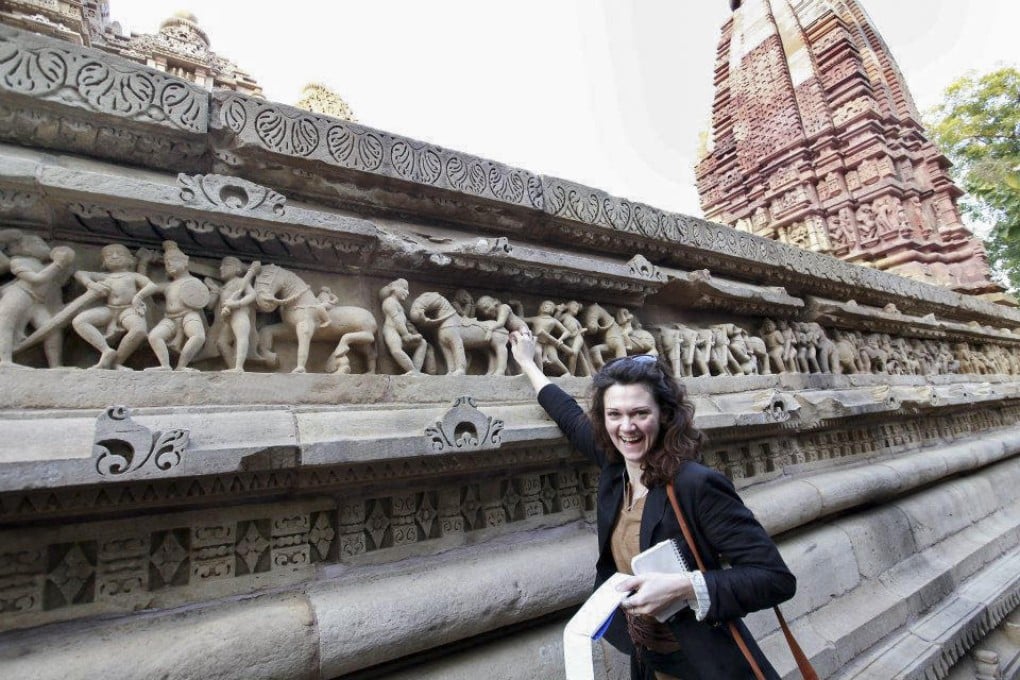Erotic friction: Sexuality and the subcontinent
Having spent a year exploring sexuality in the Indian subcontinent, author Sally Howard tells Amrit Dhillon that the country that gave us the Kama Sutra is in the midst of a sexual revolution

Sally Howard, British journalist and author, embarked on an exhaustive journey across India last year to explore sexuality in the subcontinent as research for he recently published book, The Kama Sutra Diaries. Along the way, she encountered lecherous autorickshaw wallahs, Delhi gigolos servicing rich portly "aunties" and the grotesque Aghoris of Varanasi, who like their sex with a bit of death. Highlighting the contradictions she found in the country that gave the world the original Kama Sutra - a text on human sexual behaviour thought to date back to between 400BC and 200BC - and which is reeling from international scrutiny of its high incidence of rape, Howard was groped by leering men but also found that half the members of some feminist groups are male.
"I travelled across the subcontinent, from a Delhi rocked by the 2012 gang rape to matriarchal Meghalaya, in the far northeast, and anything-goes 21st-century Mumbai. Considering the current sexual dysfunction of the Indian subcontinent, I was naturally trepidatious about my research topic: Indian sexuality. I also knew from long experience that Western women are subject to 'eve-teasing' [the Indian slang term for petty groping or harassment]. At one point during this trip an autorickshaw driver honked my breasts like car horns. But one aspect of Indians' notorious inquisitiveness is that there is always a group of 'aunties' to come to a hapless traveller's rescue. So my experience was largely pleasurable, and often eye-opening."
"There's no such thing as the 'Indian man'. There is a minority of Indian men who get a bad press; these are disenfranchised, uneducated young men who have no part in the 'rising India' miracle. They also have little hope in competing for a wife as the women they'd mate with have been aborted due to the 20-year-long epidemic of sex-selective abortion. So, whilst physical and sexual violence towards women is abhorrent, we have to look with clear eyes at the causal factors underlying this risible trend. On the flip side, there are the young Indian male feminists. Many of the campaign and direct-action movements set up in response to the rise in sexual violence in India, such as art campaigners Blank Noise and flash-mobbers Mind the Gap, have 50 per cent male membership. That's a situation such movements in the West can only dream of."
"I met many lively characters, from a flamboyant gay prince who's setting up an old-age home for retired eunuchs to the lovelorn males of matriarchal Meghalaya. But I was most taken aback by my audience with the Aghoris of Varanasi. The Aghori are an enigmatic sect of itinerant sadhus (Hindu ascetics) who live on the cremation grounds of India's city of death. Their reputation is grotesque: they cake their faces in funeral ashes, eat from skulls, lick lepers. They also make a point of breaking Indian sexual taboos, for example through a notorious tantric rite of copulation with a menstruating woman in a graveyard by moonlight. There are fake Aghoris at Varanasi, using shock tactics as a trick to exact money from tourists, but many Aghoris are on a profound spiritual journey, facing down taboos as routes to the Lord Shiva and the divine, or what the Hindus call ' moksha': release from the cycle of rebirth in death."

"The sexual conundrum that is India. This, after all, is the land that gave us the Kama Sutra but in which women are still cloistered in purdah [seclusion from men]. Today it's a land where young tech workers are clogging up call-centre cisterns with their spent condoms but one in which the same young couples fear to hold hands in public, on city streets. I wanted to look at India's rich history of the exploration of sex and sexuality against the backdrop of this troubled modern India."
"Historically, India's notions of sexuality are much more fluid. There's an important distinction made in classic Hindu texts between 'queerness' and the idea of a sexual preference for one's own sex. 'Queerness' in ancient India came under the umbrella Sanskrit term kibla, a term that translators often erroneously translated as 'eunuch'. However kibla is, in literal translation, a catch-all for atypical male sexual behaviour, including men with impotence, men who indulge in oral sex with other men, or anal sex with either gender, men who produce only female children, and hermaphrodites. So 'queerness' in its traditional Hindu concept doesn't refer to sexual acts with the same sex but to an idea of gender 'otherness'.